



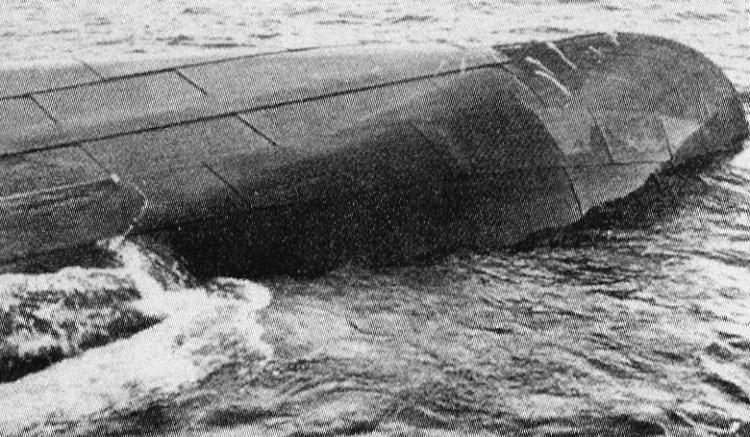
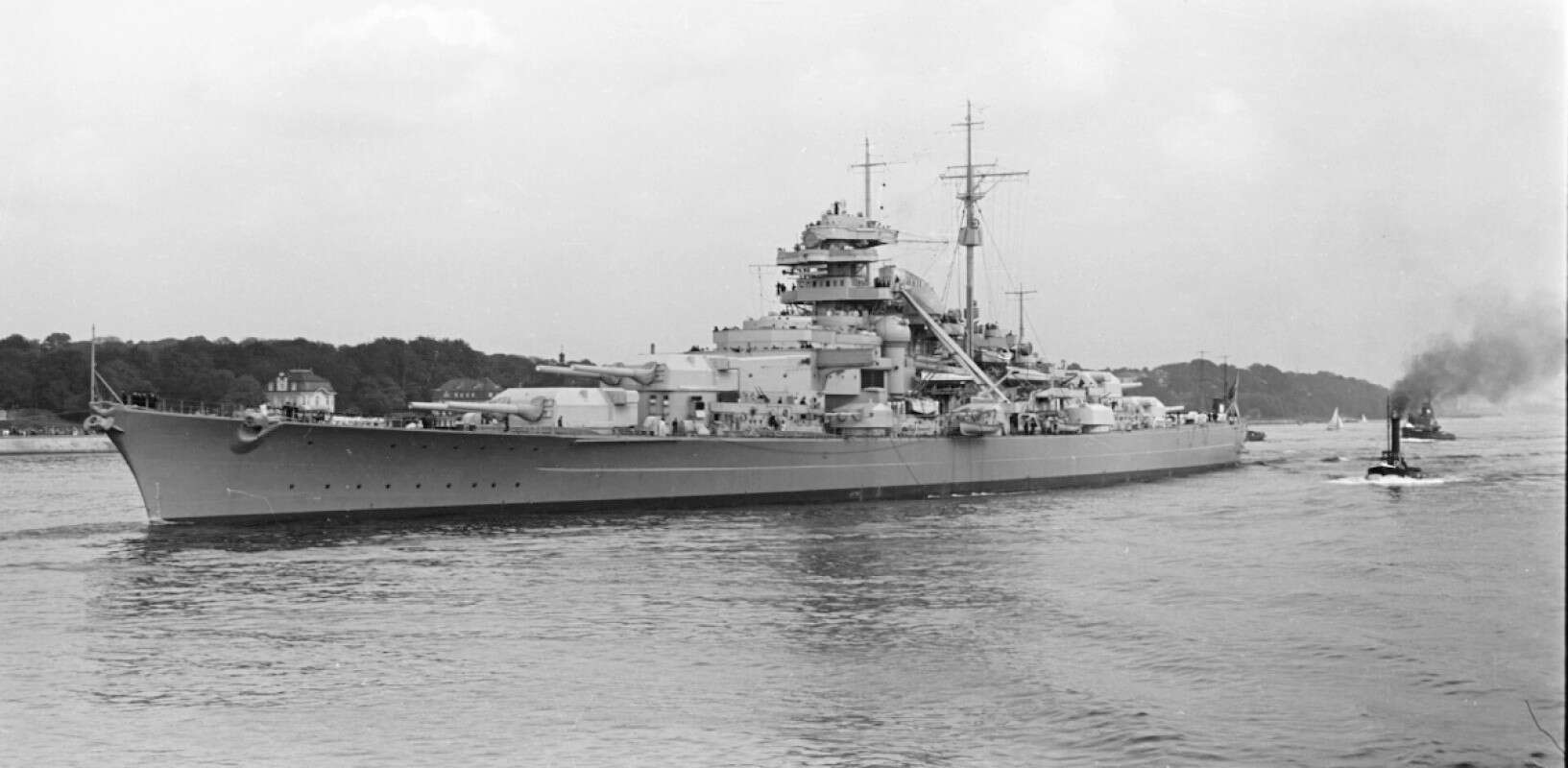









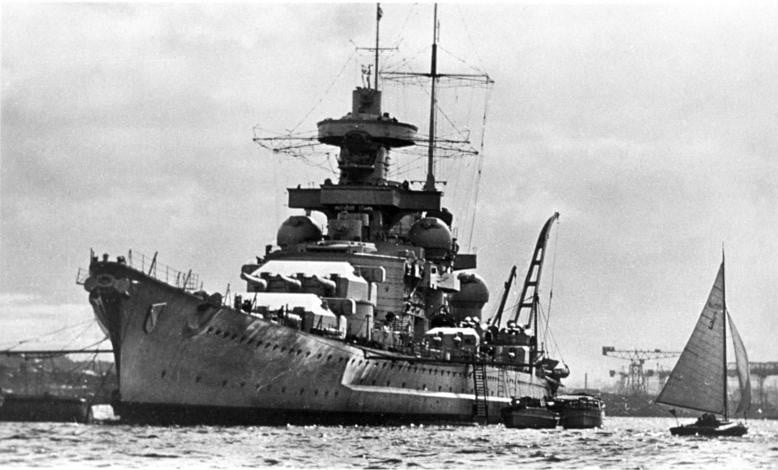

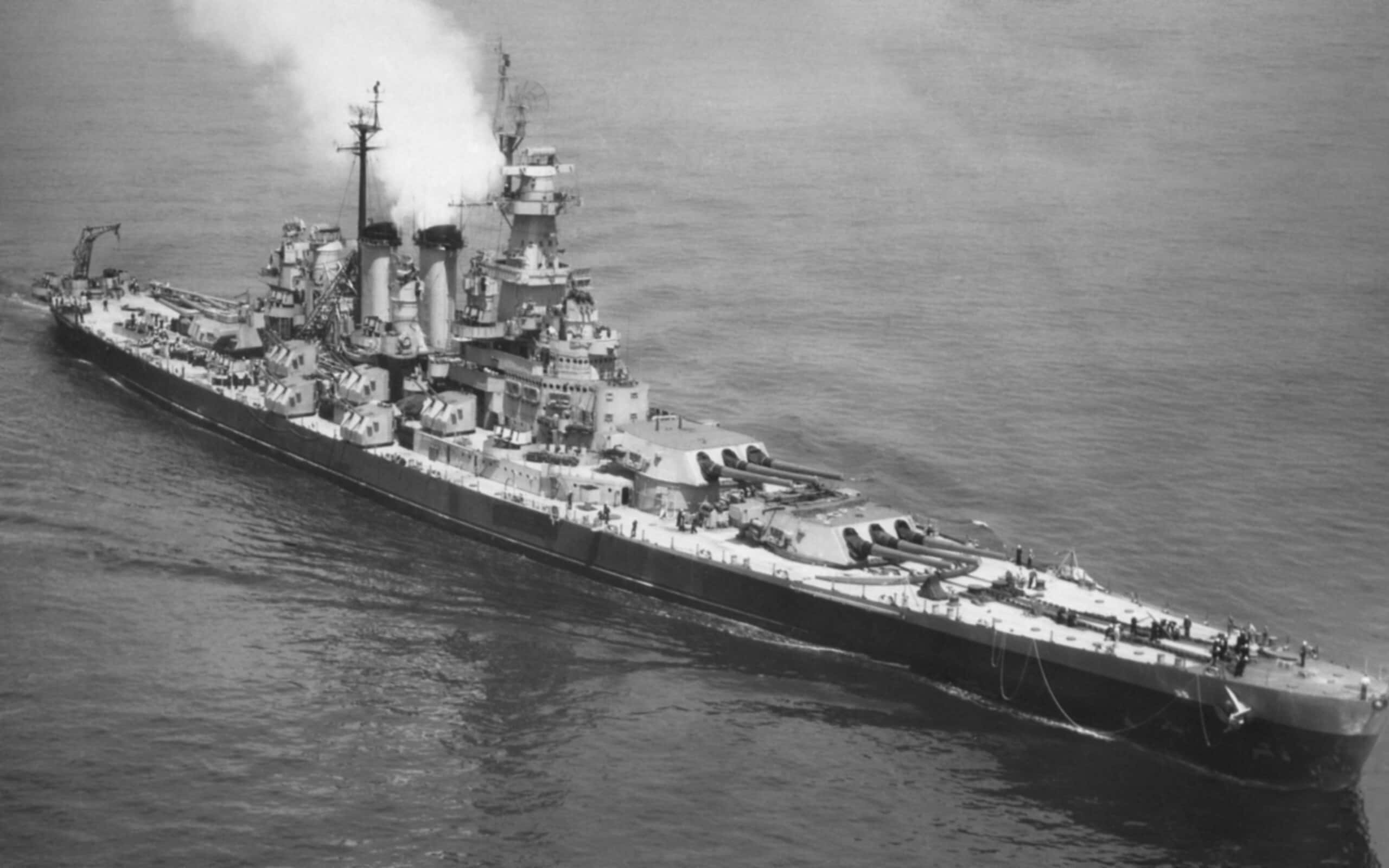

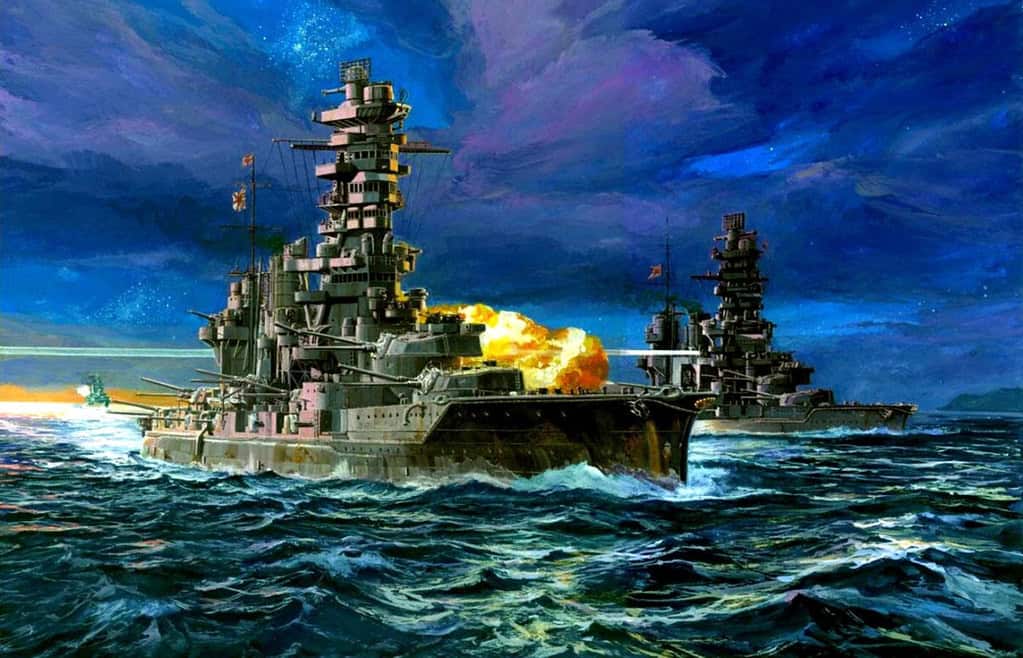

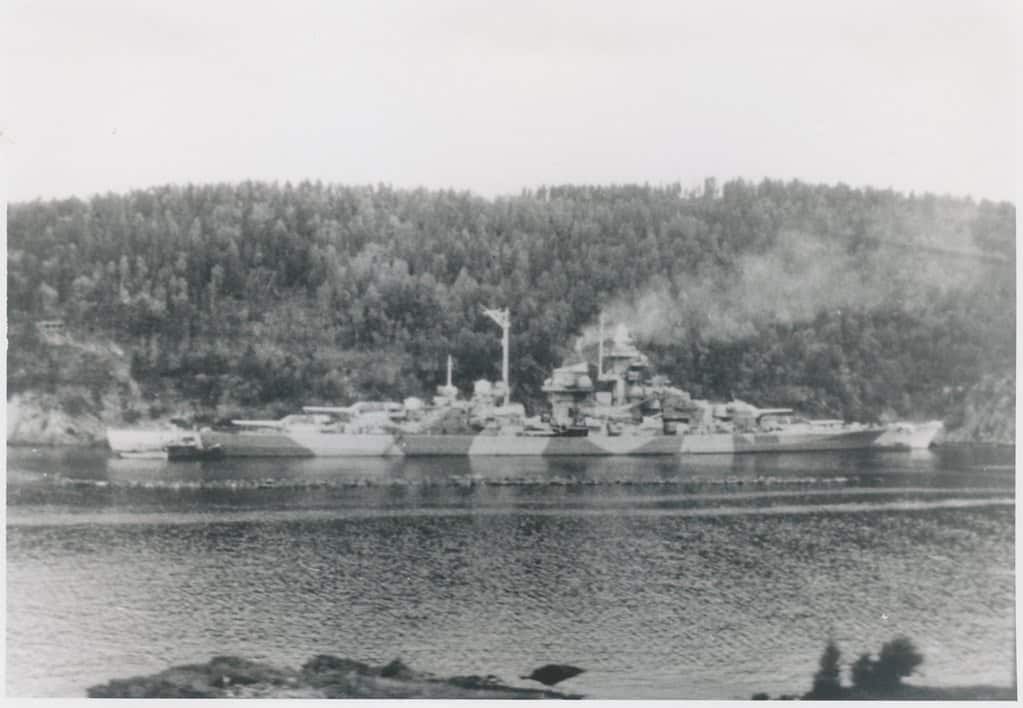



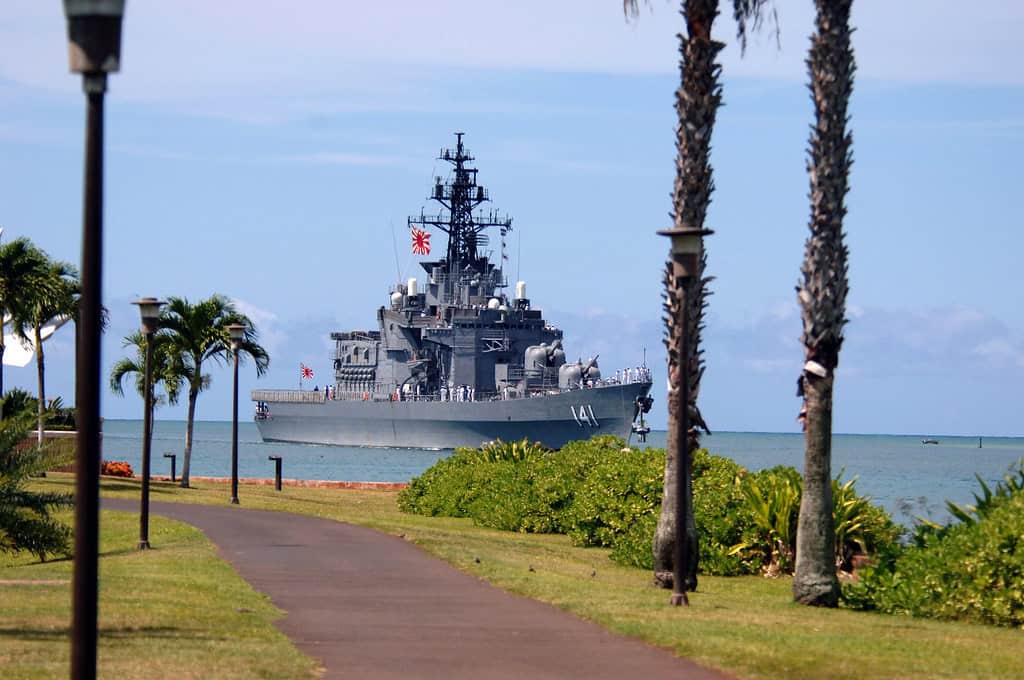










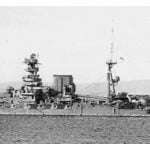




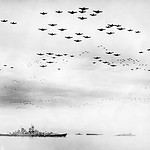




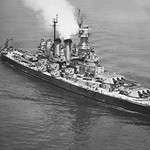











These Battleships Sunk in Combat During World War 2
Which battleships sunk in combat throughout the Second World War? We often think of the ground battles of World War 2, the massive campaigns of the sky, and other valiant battle fronts. However, the waterways posed a challenge of their own when considering all theaters of war. Today, we're taking a closer look at the ships that met a violent end during the world's biggest war.
HMS Royal Oak
- Country of Origin: England
- Total Casualties: 833 killed
- Date Sunk: October 14, 1939
The HMS Royal Oak distinguished itself quite well in combat during the Battle of Jutland. Following the end of the First World War, it would serve as a regular vessel in the English navy. That came to an end in 1939 when the ship was torpedoed by the German U-47 with all hands lost.
Bretagne
- Country of Origin: France
- Total Casualties: 977 killed
- Date Sunk: July 3, 1940
The initial invasion of France saw a scramble for its resources. The English, fearing French weapons being turned on them, would end up sinking quite a few French naval ships to prevent them from falling into the hands of German forces.
Kilkis
- Country of Origin: Greece
- Total Casualties: Unknown
- Date Sunk: April 23, 1941
The Greek battleship Kilkis originally started as an American vessel, the USS Mississippi. The Royal Greek Navy purchased the ship in 1914, where it served as a harbor defense ship. That changed in 1941 with the start of the German invasion of Greece. The Kilkis ended up sinking, thanks to a pair of dive bombers.
Lemnos
- Country of Origin: Greece
- Total Casualties: Unknown
- Date Sunk: April 23, 1941
Much like its counterpart, the Kilkis, the Lemnos was a casualty of the German invasion of Greece. It started its service career as the USS Idaho and was part of the same purchasing lot that resulted in the Greek Navy gaining the Kilkis.
Bismarck
- Country of Origin: Germany
- Total Casualties: 2086 killed, 115 captured
- Date Sunk: May 27, 1941
The German Bismarck was the casualty of a mission of revenge. The English Royal Navy doggedly pursued the Bismarck for days, finally striking true during 1941, not even a year after its initial launch date.
Marat
- Country of Origin: Soviet Union
- Total Casualties: 326 killed
- Date Sunk: September 23, 1941
Much can be said about the impact of air power during the naval engagements of the Second World War. Soviet battleship Barat had a storied career dating back to the First World War. However, it wasn't sunk by another ship, but by dive bombers attacking from above.
HMS Barham
- Country of Origin: England
- Total Casualties: 862 killed
- Date Sunk: November 25, 1941
The HMS Barham had a distinguished service record stretching back to the First World War. Following actions in the Battle of Dakar in 1940, it received some damage before going to cover multiple convoys. This sadly came to an end with a torpedo from the German U-331 in 1941, with 2/3 of the crew lost.
USS Arizona
- Country of Origin: United States of America
- Total Casualties: 1177 killed
- Date Sunk: December 7, 1941
The attack on Pearl Harbor in 1941 is one of those perfect storms for an enemy force. The American Pacific Fleet was left defenseless to a surprise attack by the Japanese. That said, American force rallied quite well, with most ships making a full recovery after repairs. The same, sadly, cannot be said for the USS Arizona, which sank with nearly all hands.
USS Utah
- Country of Origin: United States of America
- Total Casualties: 64 killed
- Date Sunk: December 7, 1941
The USS Utah fell victim to the attacks during Pearl Harbor. While most of the ships would be recovered and go on to serve throughout the rest of the war, the Utah would end up completely submerged.
HMS Prince of Wales
- Country of Origin: England
- Total Casualties: 327 killed
- Date Sunk: December 10, 1941
In a bit of rarity for English ships, the HMS Prince of Wales was one of the most decorate ships of its days upon launching in 1939. It made a name for itself by scoring multiple direct hits on the Bismarck in 1941. The Prince of Wales would meets its ultimate fate in the South China Sea, sunk, by a Japanese bomber.
Asahi
- Country of Origin: Japan
- Total Casualties: 16 killed
- Date Sunk: May 25, 1942
1942 saw Japanese fortunes in the Pacific reverse. While American forces started on the backfoot, they were quick to catch up and had a substantial material advantage. The Asahi was an old ship by then contemporary standards. It met its final fate courtesy of the USS Salmon, which torpedoed it in May of 1942.
Hiei
- Country of Origin: Japan
- Total Casualties: 188 killed
- Date Sunk: November 13, 1942
Few ships on this list took the same level of punishment as the Japanese Hiei. During combat actions during the fall of 1942, the Hieh came under fire by the USS San Francisco and USS Enterprise after sinking two American vessels. Ultimately, the final hit from the USS Enterprise would be its downfall, and it remains one of the more notable Japanese casualties of the Battle of Guadalcanal.
Kirishima
- Country of Origin: Japan
- Total Casualties: 212 killed
- Date Sunk: November 15, 1942
Another victim of the Battle of the Guadalcanal, the Kirishima was a considerably older ship. The Kirishima fought alongside its sister ship, the previously mentioned Hiei. It would sink two days later, thanks to the efforts of the USS Washington.
Roma
- Country of Origin: Italy
- Total Casualties: 1393 killed
- Date Sunk: September 9, 1943
Few attacks on a ship are as catastrophic as the magazine compartments of the turrets catching fire. The Roma, one of the few Italian ships on today's list, had exactly this happen during the fall of 1943, thanks to a German dive bomber.
Scharnhorst
- Country of Origin: Germany
- Total Casualties: 1932 killed, 36 captured
- Date Sunk: December 26, 1943
The Kriegsmarine is more notable for its submersible fleet than any of its surface vessels. A day after Christmas, the Scharnhorst, one of Germany's modern battleships, came under fire by the HMS Duke of York and its escorts. 36 men survived the attack, with nearly 2,000 dying as the ship took on water.
Strasbourg
- Country of Origin: France
- Total Casualties: Unknown
- Date Sunk: August 18, 1944
The Strasbourg has the dubious honor of being sunk twice during the Second World War. The first time occurred in 1942, when most of the French fleet at Toulon was scuttled. It was raised from the sea and pressed into German service before being bombed by American air power in 1944.
Jean Bart
- Country of Origin: France
- Total Casualties: Unknown
- Date Sunk: August 28, 1944
The Jean Bart had a fate similar to its counterpart, the previously mentioned Strasbourg. German forces captured this one before it could be scuttled, testing munitions on it before deploying it into service in the Atlantic theater. Allied bombers would sink it easily just 10 days after the Strasbourg.
Musashi
- Country of Origin: Japan
- Total Casualties: 1023 killed
- Date Sunk: October 24, 1944
The Musashi was one of a handful of Yamato-class battleships fielded by the Japanese Navy during World War 2. Intended to outgun and outpace American forces, the Musashi never got the chance. Instead, it was riddled with bombs and torpedoes, taking its crew with it.
Fuso
- Country of Origin: Japan
- Total Casualties: 1620 killed
- Date Sunk: October 25, 1944
The later years of the war saw Japanese forces getting utterly demolished by American naval and airpower. The Fuso would receive an ignoble end, breaking in two in 1944 during the Battle of Surigao Strait.
Yamashiro
- Country of Origin: Japan
- Total Casualties: 1626 killed
- Date Sunk: October 25, 1944
Another casualty of the Battle of Surigao Strait, the Yamashiro, was pelted by naval guns and torpedoes before ultimately going down in the early hours of October 25th.
Tirpitz
- Country of Origin: Germany
- Total Casualties: Between 950 to 1204 killed
- Date Sunk: November 12, 1944
The Japanese learned the hard way about the power of bombers against ships. The Germans did as well, thanks to a flight of Lancaster bombers dropping heavy munitions on the deck of the ship. These specialty bombs took the Tirpitz out of commission instantly, with most of the crew going down with it.
Kongo
- Country of Origin: Japan
- Total Casualties: 1250 killed
- Date Sunk: November 21, 1944
The Kongo was a holdover from the age of the destroyer, patrolling the coast of China during the First World War. It saw major action in the Pacific, participating at Midway, Guadalcanal, and other notable battles. Its run of luck came to an end thanks to a torpedo from a submarine, the USS Sealion, in late 1944.
Conte di Cavour
- Country of Origin: Italy
- Total Casualties: Unknown
- Date Sunk: February 23, 1945
Italy's navy didn't make a showing of itself during the Second World War, if we're honest. The Conte di Cavour had a pitiful end, being damaged in an air raid during early 1945. A week later, the poor ship sank before being scrapped in the following year.
Yamato
- Country of Origin: Japan
- Total Casualties: 3055 killed
- Date Sunk: April 7, 1945
In 1945, the Japanese fleet was hobbled, limping back to the Home Islands to maintain what gains it could. The lead ship of the Yamato-class, the Yamato was intended to usher in a new generation of naval power. It met its end thanks to American bombers, much like its sister ship, the Musashi.
Haruna
- Country of Origin: Japan
- Total Casualties: 65 killed
- Date Sunk: July 24, 1945
In the final months of the war, the Japanese fleet used whatever it could to stall the American Navy's advance. The Haruna, a ship commissioned and launched in the early 1910s, would meet its end thanks to a flight of bombers in 1945. It wasn't in the open sea but in its moorings when Tark Force 38's bombs would sink it.
Settsu
- Country of Origin: Japan
- Total Casualties: Unknown
- Date Sunk: July 29, 1945
Settsu was among a few ships it was struck at Kure Naval District in the summer of 1945. The invasion of the home islands was imminent from the perspective of the Japanese, and every step forward by American forces meant doom.
Ise
- Country of Origin: Japan
- Total Casualties: 50 killed
- Date Sunk: July 28, 1945
By the end of the Second World War, Japanese boats didn't need to fear other ships. Instead, airpower was the great equalizer. The Ise was a noteworthy ship to American forces, and it sank in 1945. Its service life was effectively over, as Japanese forces scrapped it in 1946.
Hyuga
- Country of Origin: Japan
- Total Casualties: 200 or more killed
- Date Sunk: August 1, 1945
The Hyuga suffered a fate similar to the Ise. It was struck by an American air raid in the summer of 1945, before ultimately being scrapped in 1946.
